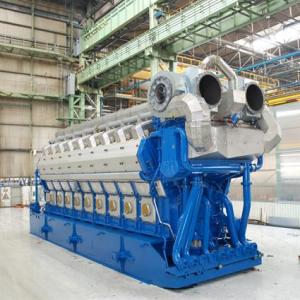Fig:LNG ship at sea
The introduction of the dual fuel diesel electric (DFDE) LNG carrier (LNGC) and the slow speed diesel driven LNGC with onboard reliquefaction (DRL) are radical departures from the currently dominant steam turbine drive technology. The introduction of the dual fuel diesel electric drive systems could also open the door for dual fuel gas turbine electric (DFGTE) propulsion systems, as they are based on the same electric drive concept.
Electric propulsion systems for LNGC’s include the following components:
•Prime movers, i.e. dual fuel diesel engines;
• Prime mover driven generators;
• Main switchboard to distribute the generated power to the various consumers;
• Propulsion transformers;
• Frequency converters;
• Electric propulsion motors;
• Propeller(s);

Fig: Duel fuel electrical propulsion system